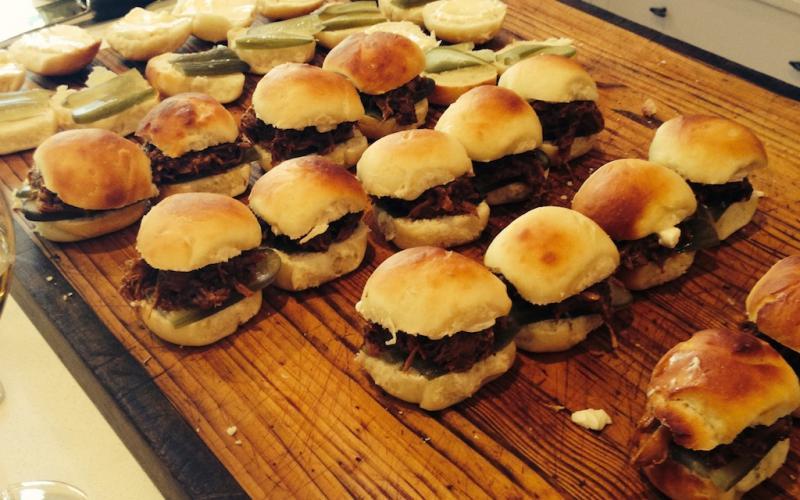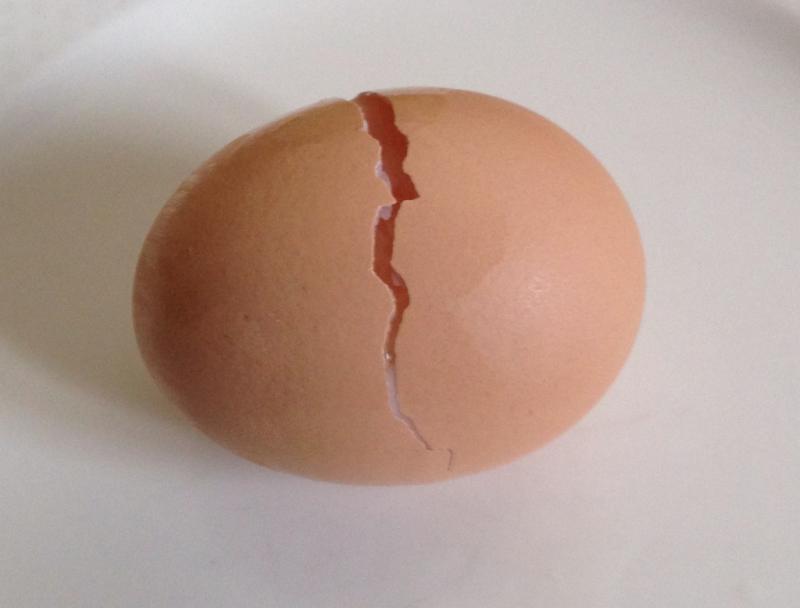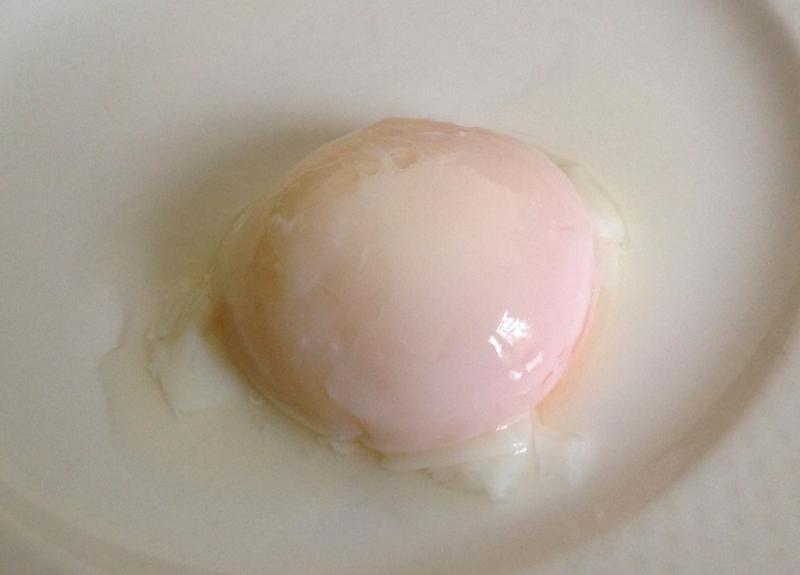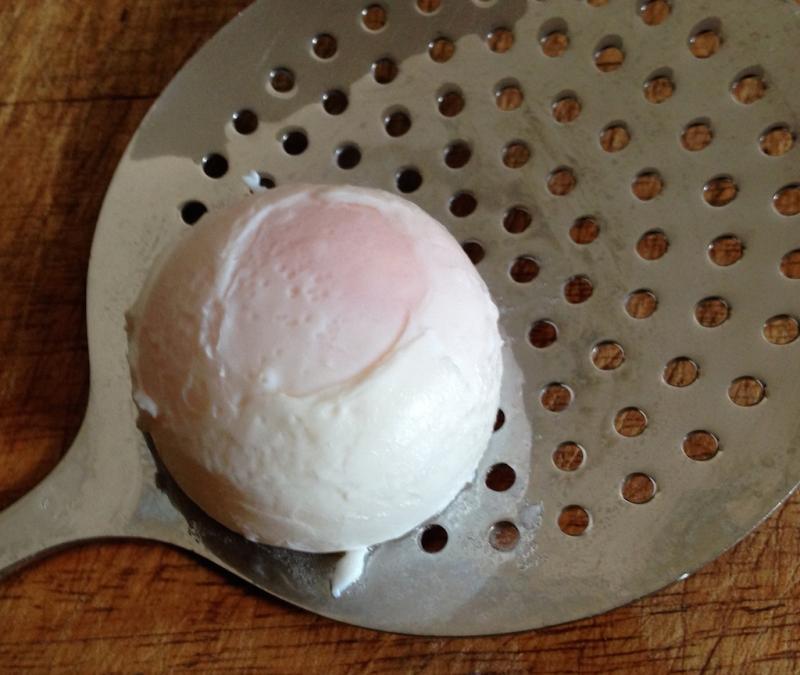-
Posts
2,606 -
Joined
-
Last visited
Content Type
Profiles
Forums
Store
Help Articles
Everything posted by nickrey
-
Or you can leave them on the sear for longer if you want more cooked steaks. People who want more seared steaks are likely to want more temperature gradients in the steaks anyway so this will give them a more conventional steak. In sum, bring all to rare/medium rare. Heat up the sear pan. Place the well done steaks on well before the others, then the medium, then the medium rare, then the rare steaks. Leave around two to four minutes between each and you should be fine.
-
Last night I made up the Beef Roasted Tenderloin with Bone Marrow Crust, Swiss Chard and Chanterelles. The Tenderloin was substituted with some skirt that I had bound together into a tenderloin shape with transglutaminese (and cooked for 20 hours rather than the 30 minutes for the tenderloin) and the chanterelles were substituted with cubes of portobello but all the other elements were as per the recipe. As usual, there were many processes involved and cooking took a long while but once again the product was spectacular. Everything I've made from the book has been top class in terms of flavour and presentation. Sorry there is no picture. One of the guests took one so I'll see if I can get it to post.
-
Having said that, I did some oxtails at 72C and do duck confit at the same temperature. I was thinking more of less cartilaginous and fibrous cuts.
-
May I suggest that you look at the sous vide topic index. It has many suggestions for cooking temperatures. The bottom line is that cooking sous vide is a function of temperature and time and both need to be adjusted to achieve your desired outcomes. For proteins, the only thing I'd cook at 62C is dark chicken meat. Even if you use probes, the temperature is important as it affects the uniformity of the product. Using a higher temperature gives you a gradient on the product (more cooked on the outside layer, less in the middle). This means for a steak that you might wind up with medium well on the outside and medium rare in the middle. Good for conventional cooking, perhaps less so for sous vide. If you want a good, practical, way of looking at cooking temperatures and time, check out the sous vide dash iphone app.
-
Use one of the induction interface disks and you can use the aluminium canner. Edited to add, I'm not sure why this would be problematic as you only need to get the pan to a specific heat to get the canner to pressure according to the gauge.
-
If it is soured by a souring agent, yes it will split. If it is a natural creme fraiche made with bacteria, no.
-
I cured mine in the fridge as well with no problem. If you are placing a layer of fat over the meat I suspect you may hinder the curing process to a large extent by forestalling exposure to air (think plunging confit in fat to stop oxidation).
-
Hi Joel and welcome. Traditional Asian masterstocks are used every day adjusting the water level to a six litre mark and adding around 1 tbsp of dark soy and 2 tbsp of light soy. You would only adjust the aromatics every third day or so. Given that you are freezing the stock, I'd adjust the same way but placing the freezing and thawing in the cycle as a component; that is, adjust the liquid and soy as normal and only adjust the aromatics every third use. Good luck. Smithy, it is a traditional stock used for braising chicken, pork, beef, or fish. As it is used in an ongoing fashion, it gains flavour not only from the soy and aromatics (eg. cassia bark, star anise, cardamom, dried mandarin peel, garlic, ginger, etc) but also from the ingredients that are cooked in it. Some commercial kitchens are using masterstocks that have been in use for decades.
-
Try what I said about lifting the plunger up when you meet resistance, it works.
-
We had a very interesting group of wines. A number of Pinots from Oregon; a few Zinfandels, which were probably a bit young; some California Chardonnay; some Rieslings; Pinot Gris; a Blaufankisch; some Grenache, Shiraz, Mourvedre; and some California Cabernets. I'm not sure if the best wines don't get exported but it was telling that two of our wines of the day were two Californian Cabernets (Robert Mondavi, 1987 and Silver Oak Cellars, 1990) which a New York native brought back from his US cellar (the event was hosted at his place).
-
Agree with all on the coarser grind. I wouldn't, however, use boiling water. Just add a little cold to take it off the boil before pouring it over the coffee. I stir mine to infuse the coffee. When you use the plunger, the grounds can cluster and make it hard to press down. I've found that the following works: press down part of the way, lift the plunger a bit, then repeat until the plunger is fully depressed.
-
Appetisers for a 4th of July US wine tasting here in Sydney. Pulled Pork Sliders with home made buns, pickles and Mayo.
-
Best way I can describe it is that if it feels like a well done steak it's ready.
-
I forgot my piece of vacuum sealed bacon leaving it in the (dry) cure for five weeks. The meat threw little to no water in the bag. I sliced a bit off and fried it to test for saltiness. As it was a bit too salty, I put the whole piece in water overnight to draw out some of the salt. I then dried the meat off with paper towels and warm smoked as usual. It was probably the best bacon I've ever made.
-
Don't sit it on granite. Put your (cold) frypan on the (cold) range and let it thaw on there. The metal has much better thermal conductivity than granite and thus will transfer ambient heat into the meat much quicker, causing it to thaw faster.
-
If you freeze any meat, buy the sealer. It increases longevity.
-
If it's finger food, people tend to like small savoury tarts with an appealing filling. How about (bought) shortcrust tarts filled with small avocado cubes, onion (cubed, soaked in water to remove bite), tomato dice, with a shrimp on top and a squeeze of lime and perhaps a small sprig of coriander added before serving? You can assemble them there easily within ten minutes (lay out shells, fill with pre-cut and mixed salad, place shrimp, squeeze of lime, garnish, serve.
-
Thought I'd put in pictures. These were relatively fresh, good quality eggs cooked at 63C for one hour. Tap gently on plate to give a fracture around circumference of egg. Open gently onto plate. Rinse away loose egg white. Place in simmering water for around a minute. Serve. Centre was runny, outside cooked. This will scale easily.
-
Didn't see this until now. Funnily enough Jim Murray says of the whisky that it has a sherry trifle note and then says "curious , how there were no sherry butts involved". Interesting that you used descriptors that are used for sherry cask fermented whiskies. Should have asked what colour it was
-
From their activity since reopening, Bruichladdich seem interested in expanding their portfolio in many ways, including distilling gin. Rather than being for collectors I suspect it was designed to sell, period.
-
Sad that the international model (220V) is 50% more in cost at $600.
-

Polyscience Sous Vide Toolbox (formerly known as SousVide Dash)
nickrey replied to a topic in Cookbooks & References
New icon too, yellow background SVD, easy to spot. -
I also find it relates to the eggs used. If they are truly free range and fresh, all it takes is a tap on a hard surface to give a break around the edge and they come out perfectly. If I use "industrial" free range eggs it turns out as you describe. My advice is to change eggs and try again and keep doing so until you find one that works. Also, try 63 to 63.2 for an hour rather than the temperature/time you tried.
-
Unless I'm very much mistaken, you're describing a whisky that was matured in a sherry cask. Well done picking up the elements, next time it should be apparent from the start.
-
I'm with haresfur. The cooking will diffuse the salt in the marinade through the meat. If they have done the recipe correctly, the salt should equate to an equilibrium brine. If the recipe is in teaspoons, I'd be cautious as the variance in saltiness with volume measurements and variable salt grains makes it an inexact measure and you really need exact measures. If in doubt, check the percentage salt in equilibrium brines and work out your salt weight in terms of the meat weight. Be aware that many marinade elements could also contain salt. You'll need to factor this into your percentage calculations.






